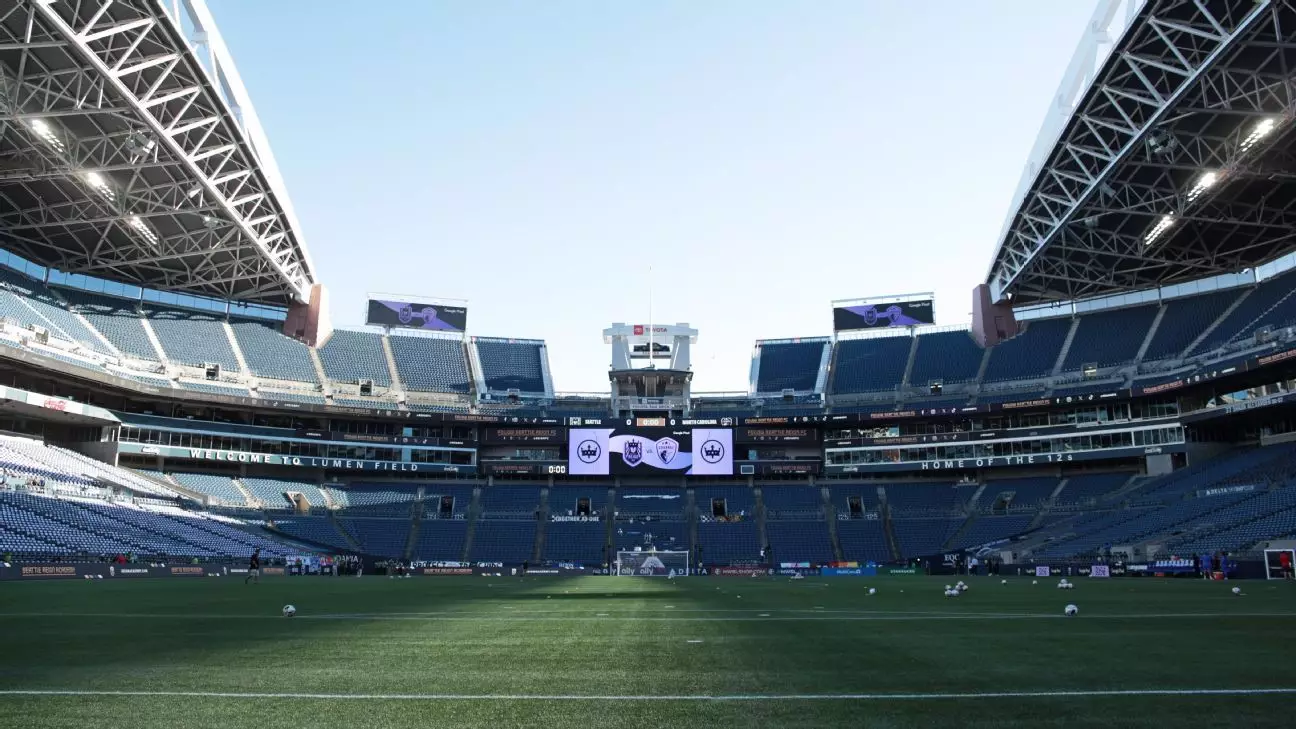As the National Women’s Soccer League (NWSL) gears up for the unprecedented chaos of the 2026 Men’s World Cup, Commissioner Jessica Berman finds herself at the helm of a turbulent ship. With the tournament expanding to 48 teams and co-hosted by the United States, Canada, and Mexico, the NWSL faces the dual challenge of maintaining its league identity while ensuring that the excitement surrounding men’s soccer doesn’t overshadow its own events.
Berman stated confidently that the NWSL will not shut down during this critical period, which raises numerous logistical questions. The league’s fearless commitment to continue its operations reflects not just resilience but a strategic vision. It emphasizes the importance of promoting women’s soccer as an essential counterpart to men’s competitions. As the global spotlight shines on the game, the NWSL has a crucial opportunity to capture the hearts of soccer fans and showcase its talent.
Understanding the Context
The Men’s World Cup is notorious for monopolizing soccer narratives and fan attention. Traditionally, leagues around the globe alter schedules or even take extended breaks in deference to the heightened interest in the World Cup. Major League Soccer (MLS) has opted for a complete hiatus, emphasizing the challenges inherent in sharing a sports calendar with such a globally significant tournament. However, the decision for the NWSL to remain operational is a powerful statement about its ambitions and relevance.
With 11 host cities for the Men’s World Cup in the U.S. alone, half of which will soon be saturated with NWSL franchises, the league stands at a pivotal crossroads. The challenge lies not only in maintaining fan engagement but in ensuring that disruptions do not affect player and team performance. As Berman put it, “Everything’s on the table right now.” This flexible mindset is essential for effective decision-making in the months ahead, especially when competing with the stellar lineup of the World Cup.
A Ripple Effect on Operations
The logistics surrounding operational changes during the World Cup reveal some concerning implications for several NWSL teams. The Houston Dash, Kansas City Current, Racing Louisville FC, and Utah Royals FC are projected to lose access to their training facilities, which can significantly disrupt their standard preparations and training regimens. The FIFA mandates for exclusive training periods exacerbate the chaos, as they will block access to training venues long before the matches even begin.
This situation demands resourcefulness. Teams will need to be proactive in seeking alternative training sites, an endeavor that could involve partnerships with local colleges or other sporting facilities. The loss of home grounds not only bears a physical impact but also alters the mental state of the players. Familiar surroundings contribute significantly to a team’s performance; displacement can lead to external pressures, which could affect outcomes on the pitch.
Opportunities in Adversity
While navigating these challenges, Berman and the NWSL leadership may also see opportunities to innovate. Previous attempts to engage with broader audiences, like last year’s ill-fated crossover tournament with Liga MX Femenil, showcased the difficulties of combining leagues. However, the NWSL can adapt this time around by organizing friendlies that strategically capitalize on the excitement generated by the Men’s World Cup. Targeting large crowds, activating community support, and leveraging the media spotlight could forge stronger connections with fans who may be experiencing women’s soccer for the first time.
Moreover, Berman’s admission that the league is “figuring it out” indicates awareness of the unpredictable nature of sports management during global tournaments. This adaptability is commendable—translating challenges into actively-managed outcomes could very well position the NWSL for success both during and after the World Cup chaos.
Looking to the Future
The upcoming years are critical for women’s soccer in the U.S., especially with the Women’s World Cup bidding process underway. U.S. Soccer’s submission to host the 2031 Women’s World Cup opens new avenues for growth within the sport. However, fan engagement during events like the Men’s World Cup is also crucial, as it offers a platform for women’s soccer to shine in the wider sporting narrative.
As the world gears up for an extraordinary athletic festival, the NWSL leaves no stone unturned, ready to seize every available opportunity to promote women’s soccer, strengthen its business framework, and attract passionate fans. The road ahead may be congested, but with strategic foresight and flexible planning, the NWSL is poised to transform challenges into tremendous opportunities. In an evolving sports landscape, how this league capitalizes on the momentum could define the future of women’s soccer in America.

